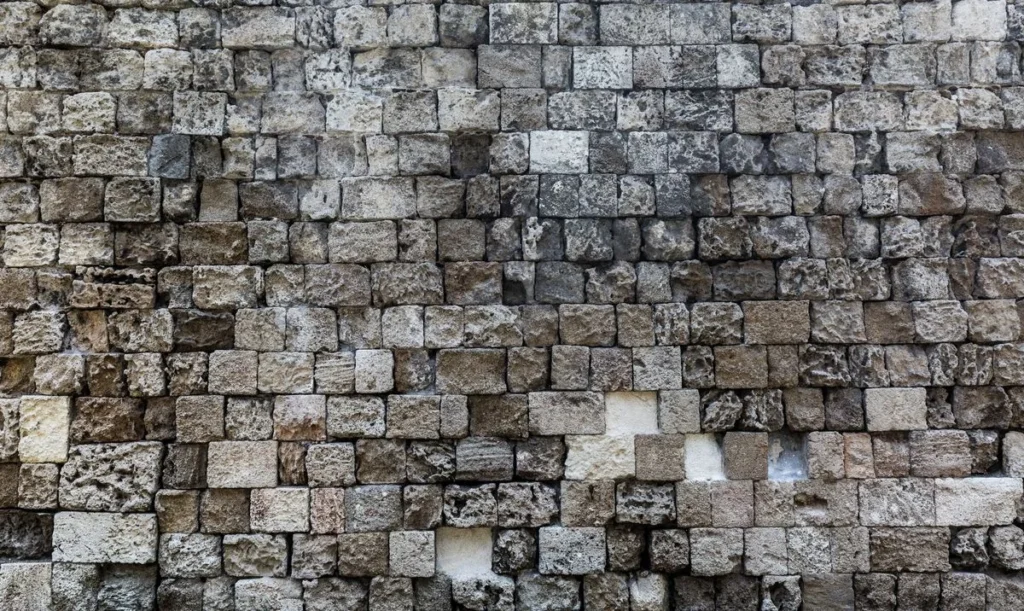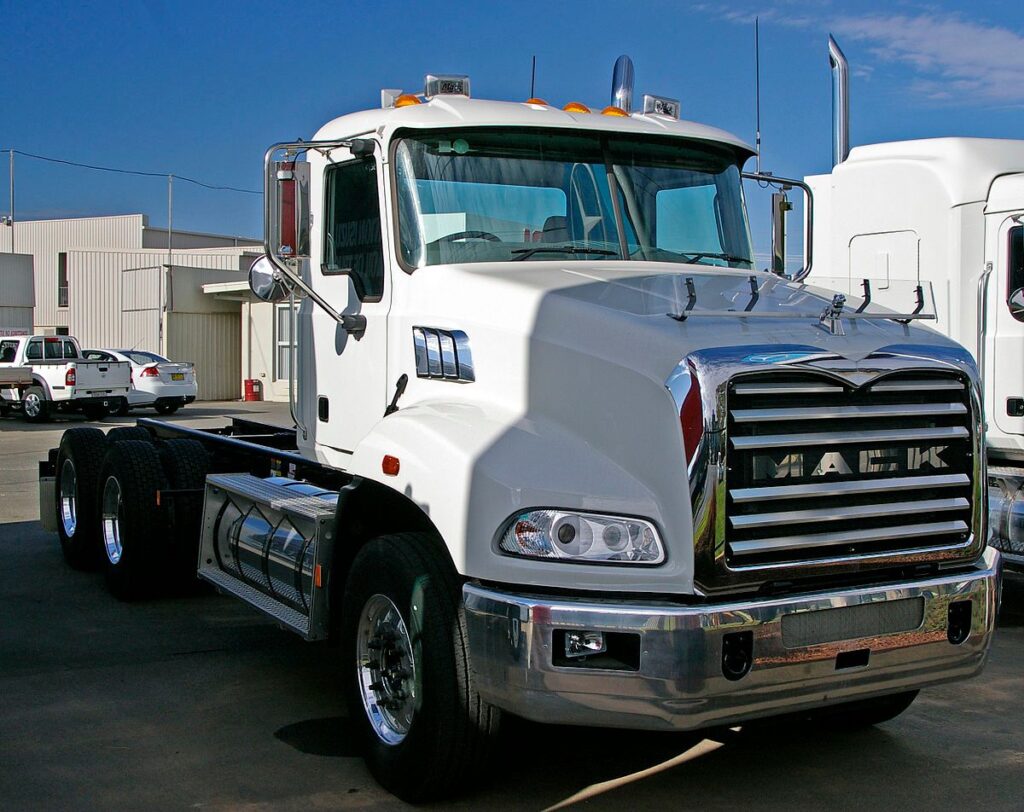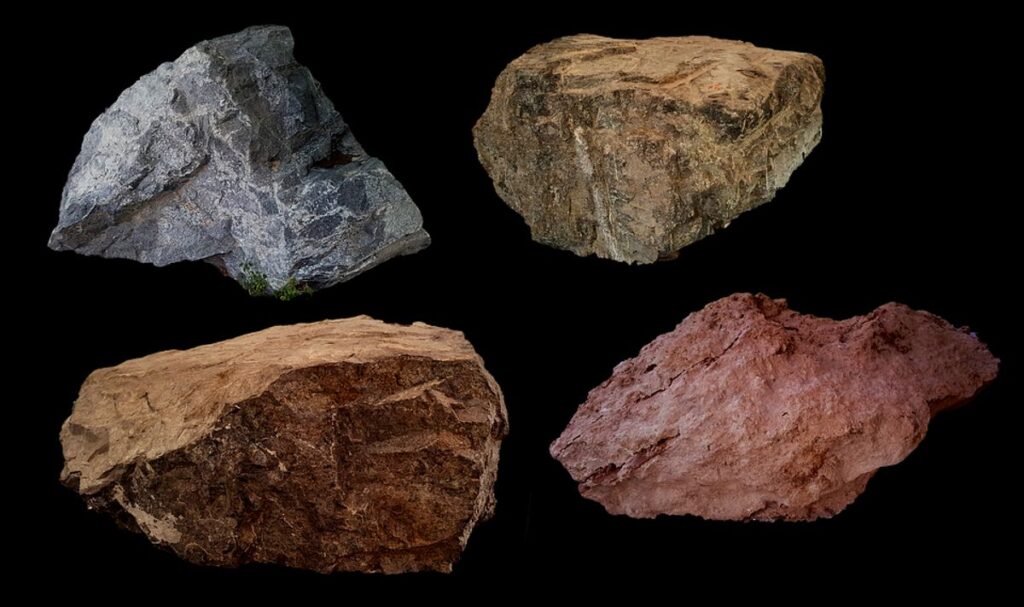Limestone Calculator

When embarking on a project that requires limestone, precise estimation of your material needs is crucial for both cost-efficiency and successful completion.
A limestone calculator is an indispensable tool that helps you determine the exact amount of crushed limestone required for your specific project.
- Key Takeaways
- Determining the Scope of Your Project
- Choosing the Right Limestone Product
- Calculating Volume Based on Area and Depth
- Inputting Your Measurements
- Selecting Stone Size and Compaction Options
- Interpreting the Results and Adjustments
- Compacted vs. Loose Limestone
- Estimating Additional Materials for Backfill
- Handling Overages and Shortages
- Requesting a Quote and Scheduling Delivery
- Understanding Delivery Options: Delivered or FOB
- Coordinating with Your Nearest Quarry
- Accuracy of Estimates and State Spec Weights
- Accounting for Waste and Repairs
- When to Consult with a Professional
Key Takeaways
- Understanding the full scope of your project and the type of limestone product needed is essential before using a calculator.
- A limestone calculator simplifies the process of estimating material needs by considering area, depth, and stone size.
- Knowing the difference between compacted and loose limestone will impact the volume and type of materials you need to order.
- It’s important to account for additional materials for backfill and a contingency for overages and shortages in your estimates.
- Always consult with a professional for complex projects and remember that calculator estimates are based on standardized weights and may require adjustments.
Understanding Limestone Project Requirements

Determining the Scope of Your Project
Before diving into the specifics of limestone usage, it’s crucial to determine the full scope of your project. This includes assessing the environmental impact, energy consumption, and the materials needed for construction. A detailed project model should be created, followed by structural calculations and the delineation of column sections.
The scope of your project will dictate the volume of limestone required, as well as the type and size of the product needed.
Understanding the scope involves meticulous scrutiny of the project’s parameters, which leads to a comprehensive bill of quantities. This bill will detail the precise amount of limestone needed for optimal execution. Remember to consider additional factors such as project timeline and the need for permits, which can affect the overall cost and timeline.
- Project Model: Creation using tools like Revit.
- Structural Calculations: For accurate material quantification.
- Bill of Quantities: Detailed list of materials, including limestone.
- Additional Considerations: Permits, features, and timeline.
Choosing the Right Limestone Product
Selecting the appropriate limestone product is crucial for the success of your project. Consider the specific application—whether it’s for landscaping, architectural features, building construction, or decorative elements like fire pits and surrounds. Each application may require different limestone properties, such as color, durability, or finish.
Here’s a quick guide to help you identify the right limestone product for your needs:
- Landscaping: Opt for durable and weather-resistant limestone, like boulders or natural stone pavers.
- Architectural: Choose limestone with a consistent color and texture for a uniform appearance.
- Building: Prioritize structural integrity with crushed limestone aggregates or solid blocks.
- Decorative: Select honed or polished limestone for an elegant finish on fireplaces or steps.
Remember, the finish and size of the limestone can significantly impact the aesthetic and functional outcome of your project. It’s essential to match these characteristics with your project’s requirements.
When in doubt, consult with a professional to ensure that you’re making an informed decision. The right limestone product not only enhances the beauty of your project but also ensures longevity and ease of maintenance.
Calculating Volume Based on Area and Depth
To accurately estimate the amount of limestone needed for your project, calculating the volume is a critical step. Begin by adding the length and width in feet of the area you wish to cover. Then, determine the depth in inches that your project requires. This will give you the total cubic volume necessary for your limestone needs.
Remember, these calculations are estimates. It’s essential to consider that the actual amount may vary based on the compaction of the limestone and the specifics of your project area.
Here’s a simple formula to calculate the volume:
Volume = Length (ft) x Width (ft) x Depth (in) / 12
This formula will convert the depth from inches to feet, providing you with a volume in cubic feet. For larger projects, you may want to convert this to cubic yards by dividing the total cubic feet by 27.
Once you have the volume, you can use it to estimate the weight of the limestone required, as limestone calculators often provide results in both volume and weight. This dual output can be particularly helpful when ordering your materials, as some suppliers may prefer one measurement over the other.
Navigating the Limestone Calculator

Inputting Your Measurements
When using a limestone calculator, accurate input of your measurements is crucial for a reliable estimate. Add the length and width in feet, and then specify the depth in inches of your project area. Here’s a simple guide to follow:
- Select the stone size and whether it will be compacted or loose.
- Input the length and width of the area you’re covering.
- Enter the depth in inches that you require.
- Press the “Calculate” button to get your estimate.
Remember, these are simply estimates. For precise needs and to place an order, always consult with your supplier.
After inputting your measurements, the calculator will provide an estimate of the quantity and weight of limestone needed. This is based on the area to be covered and the desired depth, ensuring you have enough material for your project.
Selecting Stone Size and Compaction Options
When using a limestone calculator, it’s crucial to select the appropriate stone size for your project. This choice will affect the material’s compaction behavior and stability. For instance, crushed stone is often preferred for foundations due to its ability to compact and provide solid support. The angularity of crushed stone enhances its stability when compacted.
After choosing the stone size, decide whether you’ll be using a compacted or loose option. Compacted limestone is typically rolled or plate compacted into position, creating a denser and more stable base. Loose limestone, on the other hand, is simply dumped or spread without further compaction efforts.
To ensure the best results, always input the length and width in feet, and the depth in inches of your project area before pressing the “Calculate” button.
Here’s a quick reference for common crushed limestone sizes:
- #57 Stone Aggregate: Often used for drainage or under concrete slabs.
- Crusher Run: Ideal for driveways and walkways due to its ability to compact well.
- Pea Gravel: Perfect for landscaping or decorative purposes.
Remember, the calculator is a tool to estimate your material needs. It’s important to account for potential variances when ordering your limestone.
Interpreting the Results and Adjustments
Once you’ve used the limestone calculator, the next step is to interpret the results to ensure they align with your project’s specific needs. The calculator will provide you with an estimated volume of limestone required, but it’s crucial to consider any potential adjustments that may be necessary. For instance, if your project area has an irregular shape or inclines, you may need to increase the estimated amount.
- Review the estimated volume and compare it with your project’s dimensions.
- Consider the site’s topography and make adjustments for slopes or irregular shapes.
- Factor in the possibility of compaction, which can affect the volume needed.
Remember, the calculator’s output is an estimate. It’s essential to account for variables such as compaction and site-specific conditions that could alter the actual amount of limestone needed.
After interpreting the results, you may find that adjustments are necessary to the initial estimate. This could involve increasing the volume to account for compaction or reducing it if the area is more compact than expected. Always round up to ensure you have enough material, as it’s better to have a slight excess than to run short during your project.
Practical Tips for Limestone Usage

Compacted vs. Loose Limestone
When planning your limestone project, it’s crucial to understand the difference between compacted and loose limestone. Compacted limestone is denser and more stable, as it is mechanically compressed to fit into a smaller volume. This process increases the limestone’s load-bearing capacity, making it suitable for pathways, driveways, and as a base material for construction projects.
Loose limestone, on the other hand, is not subjected to compaction. It is simply spread out and may shift or settle over time. This type of limestone is often used for landscaping, drainage applications, or as a decorative top layer.
The choice between compacted and loose limestone will significantly affect the volume required for your project. Always consider the end use and the desired stability of the finished surface when making your selection.
Here’s a quick reference to help you decide:
- Compacted Limestone: Ideal for high-traffic areas, provides a stable base.
- Loose Limestone: Best for low-traffic areas, offers a more natural look.
Remember, the volume of limestone will change depending on whether it is compacted or loose. Excavation increases the volume of material, so material from the borrow expands when dumped into the truck bin, into the site, or stockpiled.
Estimating Additional Materials for Backfill
When estimating the materials needed for backfill, it’s essential to consider not only the volume but also the weight and cost of the gravel. Always purchase an additional 10-15% of materials to cover any unexpected issues or repairs. This foresight can prevent unnecessary trips and delays during your project.
For example, if the calculated volume of backfill is 300 ft³, with a gravel density of 84.03 lb/ft³, the weight would be approximately 25,208 lb. The cost, at $2 per pound, would be around $10,373.06. Here’s a simple breakdown:
| Volume (ft³) | Density (lb/ft³) | Weight (lb) | Cost ($) |
|---|---|---|---|
| 300 | 84.03 | 25,208 | 10,373.06 |
Remember, the volume and weight calculations are crucial for determining the amount of backfill material required. Ensure you have accurate measurements to avoid shortages.
Calculating the correct amount of gravel for backfill is vital for the stability and longevity of your project. Use granular materials like gravel for better water erosion control and to maintain the integrity of structures such as retaining walls.
Handling Overages and Shortages
When planning for limestone projects, it’s crucial to anticipate the possibility of overages and shortages. Always order a bit more than your calculations suggest to account for any unexpected circumstances. A common guideline is to add 10-15% to your total material estimate. This buffer helps cover mistakes or unforeseen repairs, ensuring your project isn’t stalled due to a lack of materials.
To determine the exact surplus amount, consider using tools like a percentage calculator. This can help you make precise adjustments to your order, balancing efficiency with preparedness.
Remember, suppliers often have specific policies regarding order cancellations and returns. For instance, free cancellations may only be available within 24 hours of placing an order, and a cancellation fee could apply thereafter. No cancellations are typically allowed once the shipment has left the warehouse. It’s important to review these policies in advance to avoid any unnecessary costs or delays.
| Material Type | Additional Percentage | Reason |
|---|---|---|
| Limestone | 10-15% | Mistakes and Repairs |
By carefully managing overages and shortages, you can ensure a smoother project flow and avoid the inconvenience of multiple trips to the supplier or the hassle of managing returns.
Ordering and Delivery Considerations

Requesting a Quote and Scheduling Delivery
Once you have determined the amount of limestone needed for your project, the next step is to request a quote and schedule delivery. This process is straightforward but requires attention to detail to ensure accuracy and timeliness.
- Contact the supplier with your project details and the calculated limestone volume.
- Provide your delivery address and any specific instructions or requirements.
- Discuss the lead time for delivery and any potential shipping costs.
- Inquire about any discounts or promotions that may apply to your order.
It’s essential to confirm all details of your quote and delivery schedule in writing to avoid misunderstandings and ensure a smooth transaction.
Keep in mind that suppliers may have a cancellation policy, typically allowing free cancellations within a certain timeframe after the order is placed. After this period, cancellation fees may apply. Always review the supplier’s terms and conditions before finalizing your order.
Understanding Delivery Options: Delivered or FOB
When finalizing your limestone order, understanding the delivery options is crucial for planning and budgeting. Choosing between delivered or FOB (Free On Board) can significantly affect your project’s cost and timeline. Delivered means the supplier will bring the limestone to your project site, while FOB requires you to arrange for transportation from the supplier’s location.
- Delivered: The convenience of having materials brought to your site can save time and resources, especially for larger projects.
- FOB: Opting for FOB usually means a lower initial cost, but you must consider the logistics of picking up and transporting the limestone yourself.
Remember, accessibility and logistics play a vital role in your decision. Difficult access to your site or a significant distance from the supplier can increase costs substantially.
It’s essential to request a quote that outlines both options. This allows you to compare and decide based on your project’s specific needs and budget constraints. Always coordinate closely with your supplier to ensure a smooth process, whether you choose delivery or FOB.
Coordinating with Your Nearest Quarry
Once you have your limestone needs estimated, the next step is to coordinate with your nearest quarry. This is crucial for ensuring that your project runs smoothly and that you receive your materials promptly. Contacting the quarry directly allows you to discuss your specific needs, get a quote, and schedule delivery.
It’s important to establish a good relationship with your quarry contact. They can provide valuable insights into the availability of different limestone products and help you plan for any potential delays.
Remember to inquire about both delivery and FOB options for pickup. Each quarry may offer a range of crushed limestone products suitable for various project sizes, from commercial construction to home landscaping.
Calculator Disclaimer and Final Recommendations

Accuracy of Estimates and State Spec Weights
When utilizing a limestone calculator, it’s crucial to recognize that the estimates provided are based on standardized state spec weights. These weights are used to calculate the tonnage of crushed stone required for your project, assuming a uniform thickness across a square yard of rock. However, variations in limestone density and granular composition can lead to discrepancies between the estimated and actual amounts needed.
It is advisable to purchase an additional 10-15% of materials to cover any unforeseen circumstances, such as mistakes or unexpected repairs. This buffer ensures that your project can proceed without unnecessary interruptions for additional supplies.
The calculator’s precision hinges on the accuracy of your input measurements and the consistency of the limestone’s properties. To aid in your planning, consider the following table outlining potential variances and their implications:
| Limestone Property | Potential Variance | Implication |
|---|---|---|
| Density | +/- 10% | Tonnage adjustment may be required |
| Thickness | +/- 1 inch | Volume recalculations necessary |
| Granularity | Fine to Coarse | Compaction factor consideration |
Remember, these are estimates and should be used as a guide rather than an absolute. Always verify the quantities with a professional if precision is critical for your project.
Accounting for Waste and Repairs
When planning for a limestone project, it’s crucial to account for potential waste and repairs. These factors can significantly impact the total amount of limestone needed and the overall cost of the project. Waste can occur at various stages, from transport to installation, and during the lifecycle of the building, including maintenance and refurbishment.
- Transport to the building site and installation may lead to material loss.
- Operation and maintenance involve periodic repairs and replacements.
- The end-of-life phase includes de-construction and disposal, which may allow for material recovery.
It is essential to consider these aspects in the early planning stages to ensure a realistic budget and avoid unexpected expenses. By including a contingency for waste and repairs in your calculations, you can mitigate the risk of underestimating your limestone needs.
Remember, environmental remediation costs can also be a factor, especially if the project involves significant land alteration. These costs should be recorded appropriately, as they can affect the financial aspect of the project.
When to Consult with a Professional
While a limestone calculator can provide a solid estimate for your project needs, there are times when the complexity or scale of a project necessitates professional insight. Consulting with a professional is crucial when you encounter situations that require specialized knowledge or when the stakes are high in terms of structural integrity and compliance with local codes.
- Projects with unique design elements or irregular shapes may not fit standard calculation models.
- Large-scale developments or those with significant environmental impact considerations should have expert evaluation.
- Compliance with building codes and regulations often requires a professional’s verification to ensure safety and legality.
Remember, the goal is to balance cost efficiency with the assurance that your project meets all necessary standards and will stand the test of time. Seeking professional advice can save you from costly mistakes and ensure that your project is both economically and environmentally sustainable.
Conclusion
In conclusion, utilizing a limestone calculator is an invaluable tool for accurately estimating the materials needed for your project, whether it’s for commercial construction or personal use.
By inputting the dimensions of your project area and selecting the appropriate stone size and compaction option, you can quickly determine the tonnage of crushed limestone required. Remember that these calculations are estimates, and it’s wise to purchase an additional 10-15% of material to account for any variations or unforeseen needs.
For precise quotes and to arrange delivery, always contact your nearest supplier. With the right planning and a reliable limestone calculator, your project is set for success.
Frequently Asked Questions About Limestone Calculator
How do I use a limestone calculator to estimate my project needs?
To use a limestone calculator, input the length, width, and depth of your project area in feet and inches, respectively. Then, select the stone size and whether you want it compacted or loose. Press ‘calculate’ to get an estimate of the tonnage required.
What are the most common crushed stone sizes available for projects?
The most common crushed stone sizes vary depending on the supplier, but they typically range from very fine particles to larger rocks suitable for various construction needs. Contact your nearest quarry for specific sizes and availability.
Should I choose compacted or loose limestone for my project?
Compacted limestone is best for projects where the material needs to be stable and secure, such as pathways or driveways. Loose limestone is suitable for areas where you plan to dump or spread the stone without further compaction efforts.
Are the estimates provided by the limestone calculator accurate?
The estimates provided by the calculator are based on state spec weights and are intended to give a rough idea of the material needed. However, it’s recommended to purchase an additional 10-15% to account for any variances, mistakes, or repairs.
How do I account for backfill when using limestone in my project?
When estimating limestone for backfill, consider the volume of the space to be filled and the compaction of the material. The calculator can provide an estimate for the amount of gravel needed for backfill as well.
What should I do if I’m unsure about the limestone quantity needed for my project?
If you’re uncertain about the quantity of limestone needed, it’s best to consult with a professional. They can provide guidance based on experience and ensure that you have the correct amount for your specific project requirements.
